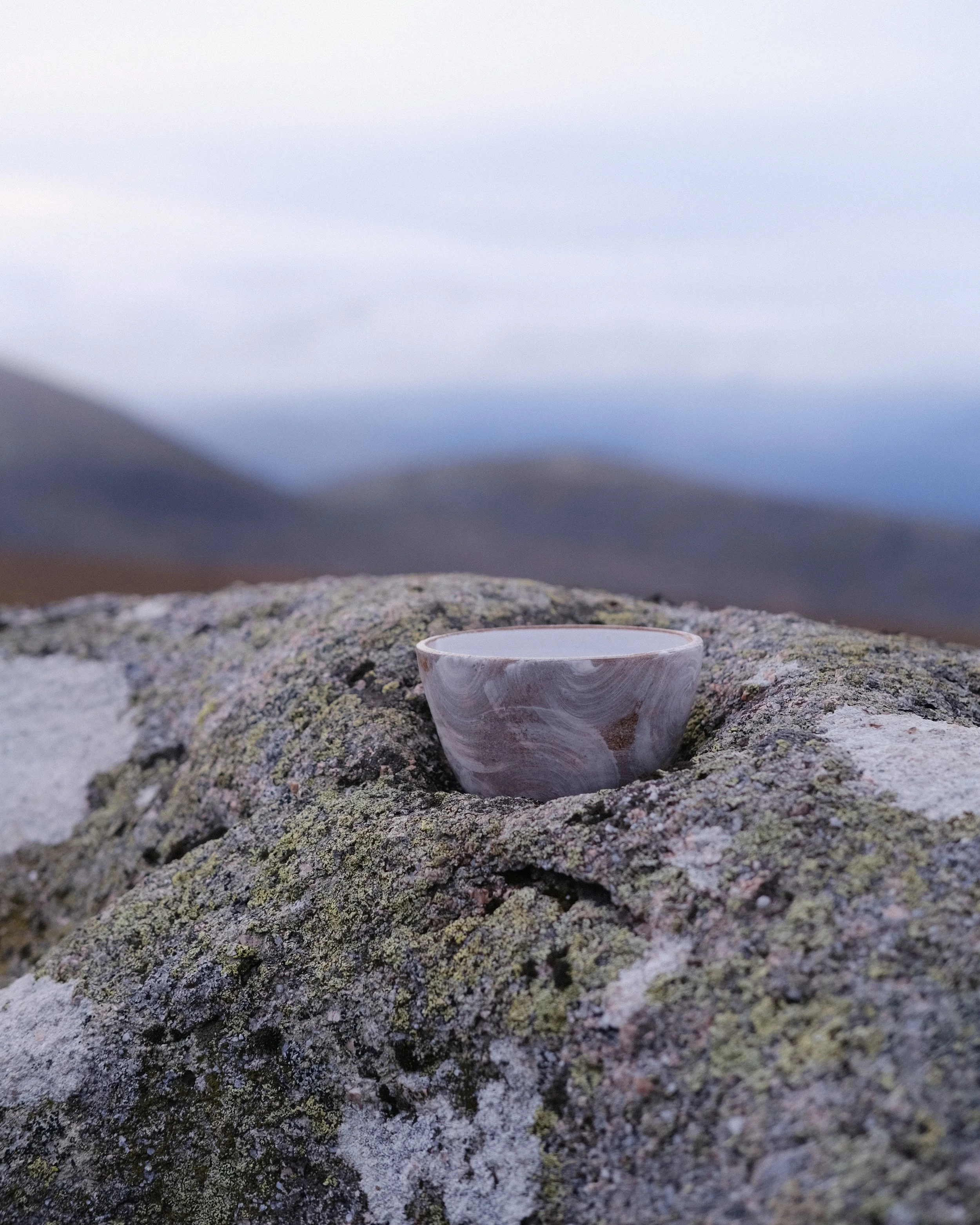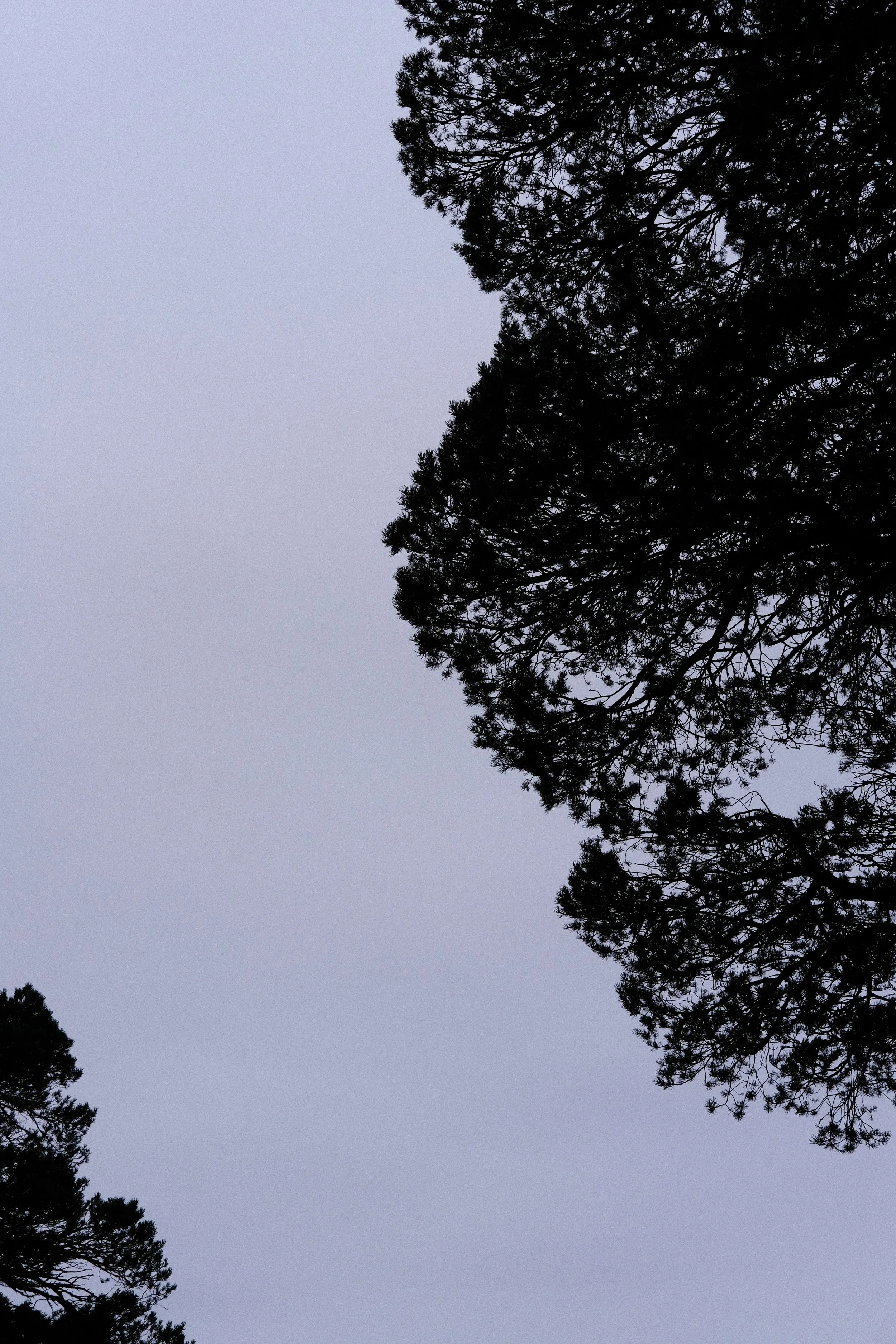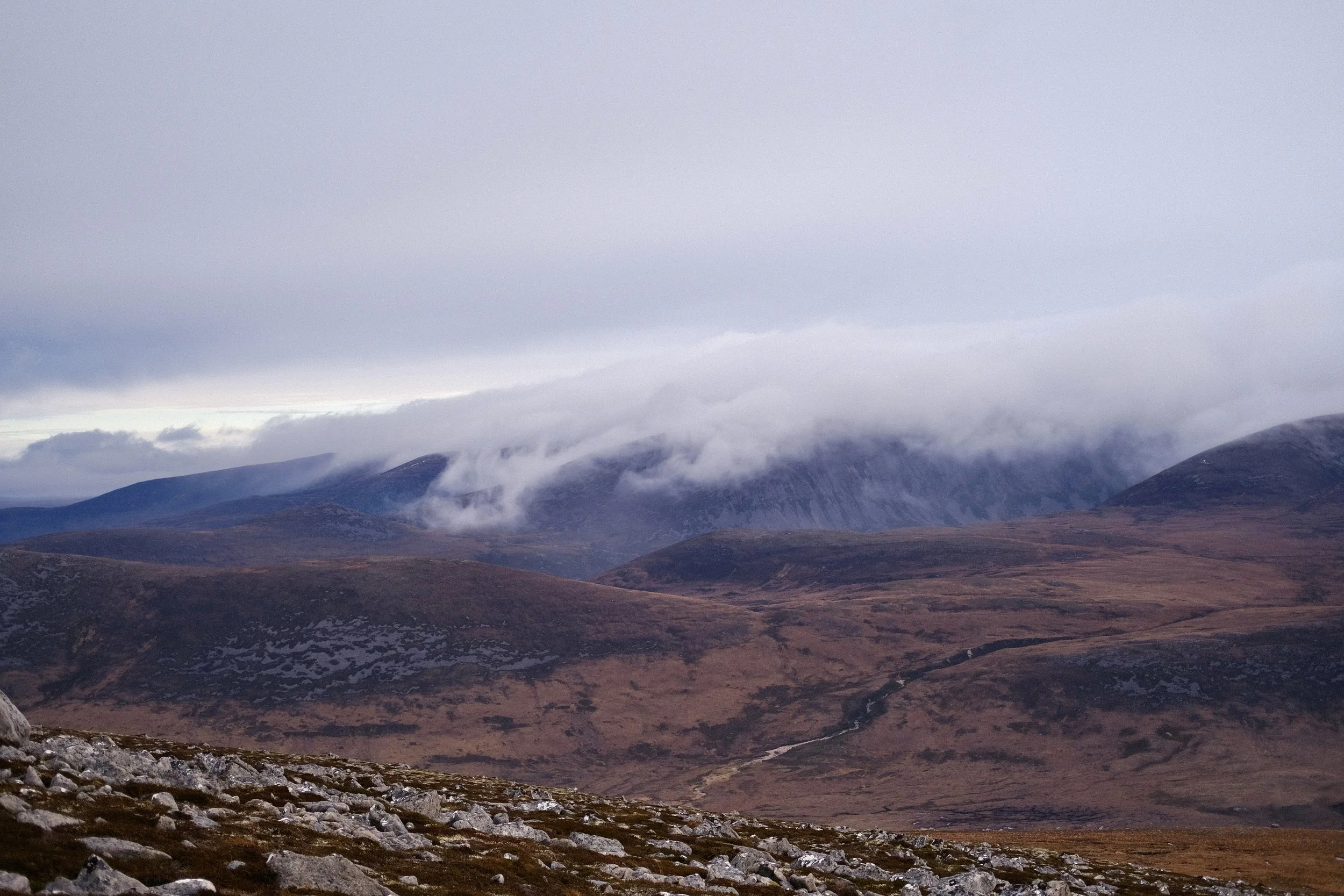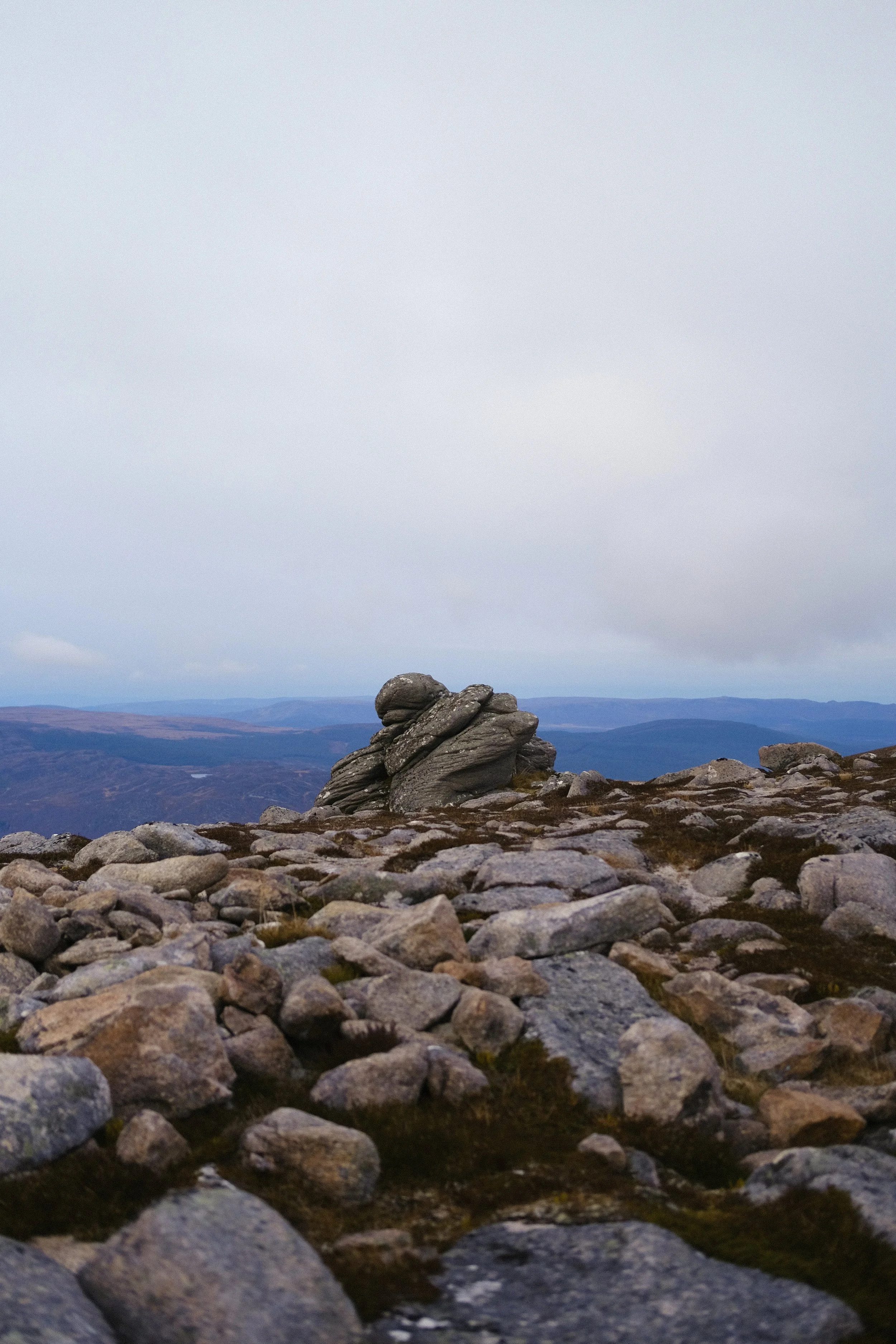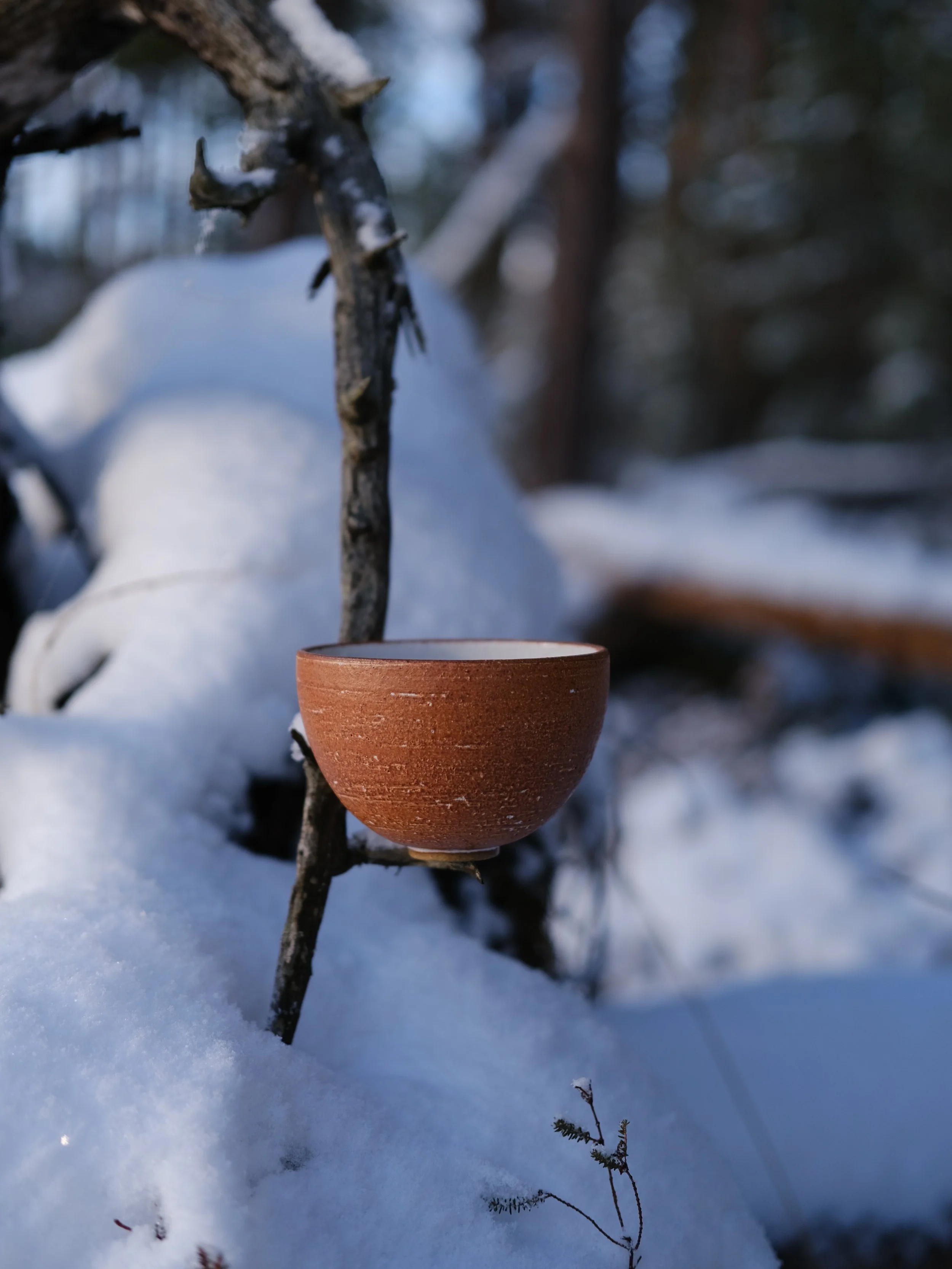waves and woven edges
We’ve tried to get to the Argyll Stone before. It was spring and the path was squelchy - pools of mud that sometimes went over our toes, sometimes up over our ankles. We made it to the tree line before heading back down. We had things to get back for that evening, we hadn’t given it enough time. The small valley felt like a lost place, somewhere where we could walk and expect to be on our own all day. Quiet except for the continuous movement of the burn and any wind through the tops of the pines that lined its banks.
We tried again, this time via Loch an Eilein, crossing over the Allt Coire Follais before finding our footpath to take us straight up the northwestern slope of Creag Dhubh. The Argyll Stone is a granite tor, a large rock with erosion-softened edges and cracks, perched on a hilltop that is otherwise bare except for a scattered rock field and scrubby alpine lichens and heather. The tor wasn’t the point of the walk, I was excited about being in the valley of the little burn again, and excited about the view into Gleann Eanaich from the top, a valley I’ve not walked but which holds whispers of Braeriach, water from its northern and western corries finding their way there.
The footpath up the valley has a quality that makes it feel like it’s not the path to take off the main path. Crossed-referenced with the map we knew it was right even though our minds continued to question it for the first couple hundred meters. It’s a small path, cushioned in amber pine needles where it’s not worn through to roots of trees and heather or a pool of mud. The sky was blanketed in heavy cloud. Looking up, the pine branches lost their color, a trick of the light that made it appear as if my night vision had kicked in at noon. Looking down, the valley’s floor glowed in rainforest greens and reds, mosses like ferns in miniature billowing up in mounds, purple branches of heather and its creamy dried blooms of last season floating down to the path as we brushed against it.
Up and up and up, we stopped for coffee, then for lunch. A section of the valley was hemmed in on the northern side by a series of partially-crumbled, inviting cliff-faces. The fractures on one face were repetitive and angular like snake skin. Another face was fractured in blocks, a scattering of ice cubes piled up on the slope below it. All of the edges were softened by moss oozing over. A large rectangular rock, one of the ice cubes, was at least three meters deep and two wide and came up to my chest. Its upper surface had round patches of densely packed moss, pale green and slightly scratchy when I ran my hand over it. I laid my head on it. Tentatively at first, then allowing its full weight to sink in.
We continued to follow the burn as it narrowed, became smaller. Up and up and up. Eventually losing sight of the large pines as small ones joined us on their creep further and further up into the heather field. Geese flew overhead in a V which became a wave, which became a V which became a wave. At the same time the path snaked back and forth, up along the burn, then turning away from it, bending towards it, running along its course, and then away again. The sound of the running water dampening and sharpening with the direction of the path. Eventually we turned away from the burn and lost its sound all together. The tor came into view just then, at the top of our final slope. The scale of the rock and the distance yet to cover was impossible to judge. It could have been a small cairn, or a small house, or somewhere in between. We trompsed through the low brown heather and the bright sea foam green of the alpine lichens.
The tor’s presence made it feel as if I was gaining no ground. There was nothing to suggest it was changing in size as I got closer. Up and up and up. It disappeared for a while and then it appeared. I arrived at the top of the hill to its south, the tor to my left. I walked past it to gain flat ground, and kept walking beyond it as the wind tripped my feet up in the rock field and made my eyes water. Looking to the east, low cloud sunk, more than sunk, was pulled into Gleann Eanaich, pulled over the further summits of Cairn Gorm and down into its corries. Purple ridges broke through and the horizon became a woven edge of land and sky. Eyes streaming, fingers frozen I turned back to the tor. My frustration and tiredness at the amount of steady uphill climb to visit a rock had ebbed and I could approach it warmly. Its lines and edges were soft from a long life at the top of the hill. More lichen than stone it seemed, the edges of the two on its surface were impossible to distinguish. A quick coffee out of the wind and a scramble up to the top where pebbles had created potholes in its upper surface, whirling around and around in the wind until they eventually formed small lichen-lined bowls that I imagined would glow when filled with fresh rain.
We raced down the hill, our legs flying, enjoying the feeling of gravity helping us back down. I said hello to the few small pines we passed on the upper slope, the first (the highest) only up to the top of my boot. The next couple up to my knees. Continuously blasted by the wind they would be growing slowly, I wondered how old they were.
Down, down, down, we followed the sun until it set, just as we joined the main path. The trees truly began to lose their colors then; the dried bracken was the last to keep it before everything turned to shades of grey. We let our eyes adjust, our feet propelling us forward along the thick cushion of pine needles. A springiness that I imagined was close to the feeling of walking on the moon. Not long after our moonwalking and after the path had turned to gravel, the moon popped out from the clouds, suspended in the upper boughs of pines. It was yellow and had a softness of churned butter. The cold clouds created a haze around it and made it impossible to tell how many days from full it was - partially obscuring, revealing, obscuring the waxing edge. With the loch below, hemmed in by hills, I had the feeling that if I could walk along their ridges and look up that I might see its other side.
Its reflection stretched out between me and it, only disturbed by the V-shaped wakes of the resident ducks as they paddled through.

